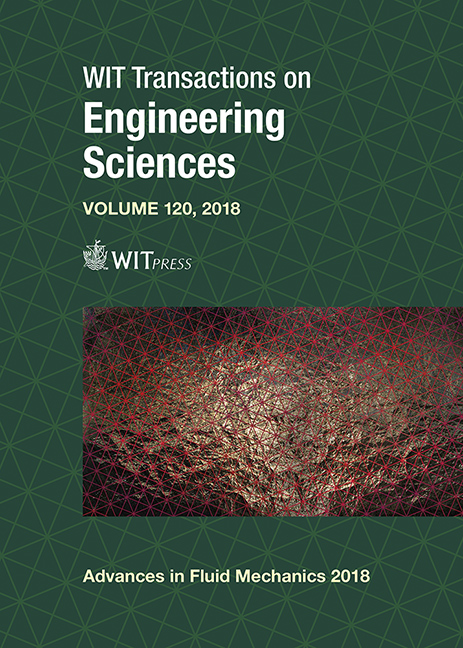WIND TUNNEL STUDY ON THE EFFECT OF THE GAP WIDTH IN THE AERODYNAMIC AND AEROELASTIC RESPONSES OF TWIN-BOX DECKS
Price
Free (open access)
Transaction
Volume
120
Pages
9
Page Range
61 - 69
Published
2018
Size
639 kb
Paper DOI
10.2495/AFM180071
Copyright
WIT Press
Author(s)
FÉLIX NIETO, MIGUEL CID MONTOYA, ARTURO FONTÁN, SANTIAGO HERNÁNDEZ, CARLOS RAPELA, ANTONIO J. ÁLVAREZ, JOSE A. JURADO, ALEJANDRO CASTELEIRO, VERONICA GARCIA
Abstract
Twin-box decks have recently been introduced in long-span bridges because this type of slotted cross-section provides flutter critical wind speeds higher than mono-box streamlined decks for flexible structures. The two parallel girders are linked together by means of transverse beams with a central gap between them. Experimental and CFD studies have shown that the length of this central gap plays a key role in the aerodynamic and aeroelastic responses of the deck. In this work, the geometry of the Stonecutters Bridge in Hong Kong (China) has been chosen as an application case to conduct a series of parametric studies based on wind tunnel tests. The tests have been conducted under smooth flow, for a 1:80 geometric scale sectional model able to modify its slot length. For an ample range of gap lengths, the force coefficients and the flutter derivatives have been obtained. It has been found that the slopes of the lift and moment coefficients suffer important changes with the gap length. In the same manner, it has also been found that the gap distance modifies the values of flutter derivatives. Finally, for a long-span bridge example, the critical flutter speeds for different gaps are obtained, aiming to identify the gap length that provides a safer threshold for the flutter phenomenon. The results reported herein permit the assessment of the impact caused by the gap length in the aerodynamic and aeroelastic responses of twin-box decks.
Keywords
twin-box deck, gap distance, Stonecutters Bridge, force coefficients, flutter derivatives, flutter velocity, wind tunnel testing





